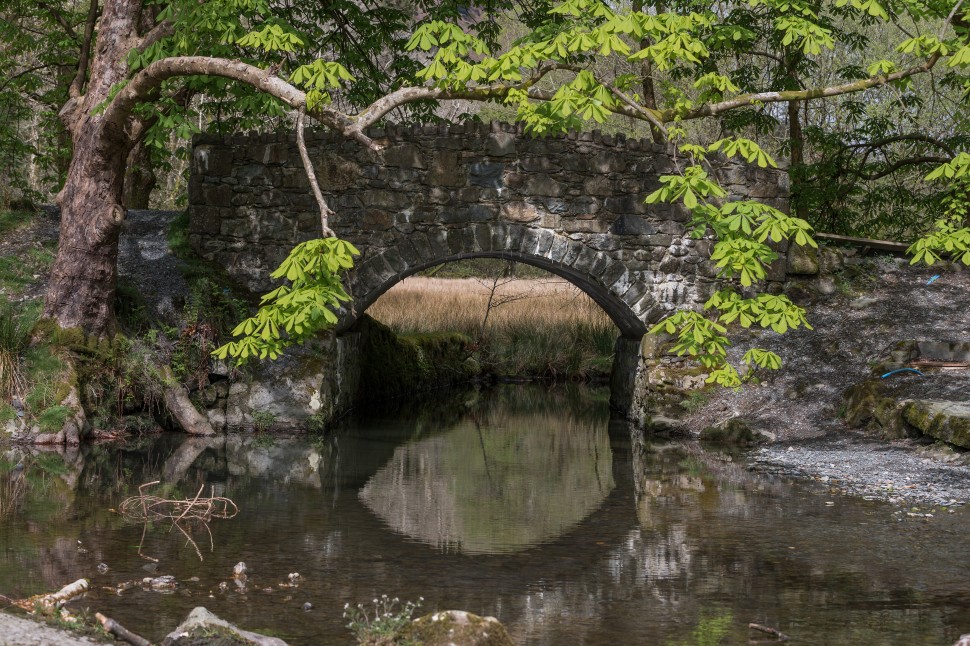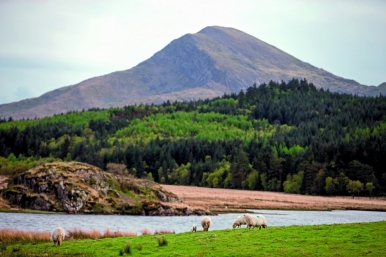Wondrous Wales offers an array of legendary attractions

A Land Of Tall Tales
From the windswept, grassy summit of Foel y Mwnt, Cardigan Bay is a shimmering expanse of surf-flecked sea. At the base of the conical hill, below a blaze of flowering gorse, a never-ending succession of rollers washes the golden arc of sand that is Mwnt beach. In such idyllic conditions, it's hard to imagine vagabonds and criminals haunting this postcard-perfect stretch of Welsh coastline.

Yet as with many of Wales' finest attractions, there are sagas and stories attached to the splendour. According to local lore, many of Ceredigion and Pembrokeshire's finest homes were built with the spoils of piracy, while offshore islands are said to have been major smuggling depots. As is often the case with Welsh history, the line between fact and fiction is a blurry one.
“This is the land of fire-breathing dragons, wizards and the Holy Grail,” says Meg van Soest, owner of the Old Vicarage guesthouse near the town of Cardigan. “If you're someone into exploring places with tales attached, then Wales should definitely be on your travel bucket list.”

Explore The Epic
With its vibrant and idiosyncratic culture, Wales has always punched above its weight when it comes to reasons for visiting. People here speak a language that's a living link to their Celtic ancestors. From the collected medieval Welsh folk tales of The Mabinogion (some of the earliest British literature from the 12th century) to the epic story of King Arthur, myth and legend have always played a big part in the Welsh attraction.
In fact, Welsh history and mythology are so closely entwined that just about every lake, rock and hill in Wales comes with its own legend. Celebrating iconic Cambrian stories both old and new, 2017 has therefore been declared the Welsh “Year of Legends”.

From ancient to contemporary, north to south, 17 of Wales' most colourful and emblematic locations have been chosen to represent the country from January through to December this year. Stretching between the island of Anglesey and the Principality Stadium in Cardiff (a famous Welsh rugby venue), this curated selection takes visitors on a journey across some of the most dramatic scenery in the British Isles, including the snow-clad peaks of Snowdonia, the serene Gower Peninsula, and the ruggedly beautiful Pembrokeshire coast.
While some of these 17 locations can be visited by public transport, the Year of Legends might just be the best excuse for a Welsh road trip since the days of Merlin.

A Brutish Bastion
Home to some of Europe's finest surviving examples of medieval castle construction, complete with dungeons, drawbridges and keeps, Wales is often called the “Land of Castles”. Of these, Caernarfon Castle is undoubtedly the most striking. A huge, muscular structure, picking a fight with this massive fortress would have been a daunting prospect for even the most well-prepared of armies.
As good a place as any to begin a tour of Wales, Caernarfon Castle is located in the extreme northwest of Wales, on a peninsula bounded by the River Seiont and Menai Strait. Built by Edward I of England as part of an iron ring of castles to control Wales, its unique polygonal towers, intimidating battlements and colour-banded walls were designed to echo Constantinople, the imperial power of Rome.
“Ancient myth already surrounded Caernarfon by the time Edward decided to construct his castle,” explains local guide Gareth Evans. “The Roman legend of Macsen Wledig recounts the dreams of a Roman emperor, who on travelling to a distant land discovers a fantastic, multicoloured castle.

“After his dream, this emperor sends emissaries to scour the globe, to try to find this magnificent spot of his dreams,” continues Evans. “This is identified as Caernarfon.”
In fact, the first fortifications at Caernarfon were built by the Romans. The ruins of their fort, which they named Segontium, are still visible today on the outskirts of the town.
Mythical Mountains
A stone's throw south of Caernarfon and extending over 2,000 square kilometres is Snowdonia National Park. Boasting rugged mountain peaks, crystal clear lakes and an array of historic sites, not to mention the third highest peak in Britain (Snowdon at 1,085 metres), this is the very rooftop of Wales.

Snowdonia is an area steeped in legend and lore, where more than half the population speaks Welsh. The Welsh tradition of storytelling has ensured that these rich and varied tales are still as vibrant today as they were when they were born centuries ago.
The Mabinogion contains numerous epic stories of characters adventuring in Snowdonia. King Arthur's mythologies are scattered across the region, with several lakes claiming to hold the sword Excalibur. A hoof mark found on the banks of Lake Barfog, close to the Snowdonian village of Betws y Coed, is said to have been made by Arthur's horse when he and his steed were pulling some foul creature from its murky waters. Bardsey Island, another of this year's 17 legendary Welsh places, is reputed to be the final resting place of both Merlin and King Arthur.
“In the Welsh language, Snowdon itself is called Yr Wyddfa,” explains Evans. “This means 'the tomb'. It is said to be the burial mound of a giant, who had a notoriety for killing kings and making cloaks from their beards.”

A Dog's Life
The Snowdonian village of Beddgelert, a collection of stone houses, inns and hotels surrounded by some of the finest alpine scenery in north Wales, is the location of Wales' most famous dog.
According to legend, a stone cairn in a field south of the village marks the resting place of Gelert, the faithful hound of medieval Welsh prince Llewelyn the Great.
“One day Llewelyn was out hunting with his wife, leaving their baby son with a nurse,” explains Evans. “When Llewelyn returned, Gelert came running out of their lodge covered in blood. Thinking the dog had killed his child, he immediately slew it, only to discover his baby alive. The blood on Gelert was from a huge wolf that he had defended the child from.”

Devilishly Good Fun
With the gradient steepening, the Vale of Rheidol Railway's diminutive locomotive belches clouds of white smoke into the thick canopy, magnifying beams of morning sunlight. Overhead, a pair of red kites perform aerial acrobatics on the breeze, as carriage windows frame scenery the rival of any in the Swiss Alps. As steam train rides go, this has to be Britain's finest.
One of the “Great Little Trains of Wales”, the Vale of Rheidol Railway travels 20 kilometres from the town of Aberystwyth to Devil's Bridge, climbing nearly 200 metres to reach Devil's Bridge Station, nestled deep within the Plynlimon Mountains. The reward for making this idyllic journey: another legendary Welsh attraction.
According to myth, the Devil himself visited Ceredigion in the 11th century after learning of its breathtaking scenery. According to legend, he struck a bargain with a local woman whose cow was stranded across the river. In a bid to buy her soul, the devil said that he would build her a bridge in exchange for the soul of the first living thing that crossed.

When the bridge was built, the woman threw a loaf of bread across it, which her dog then chased, making a mockery of the Devil's bargain. Humiliated, he was never seen in Wales again.
Today there are actually three bridges – one atop the other – at Devil's Bridge Falls. The original was probably built by monks sometime in the 12th century. The second was built in 1753, when the first bridge was judged too unstable for use. The third and highest bridge over the stunning Mynach Falls was built in 1901.
From north to south, east to west, Wales is a land filled with legend. Every breathtaking valley, soaring peak, iridescent lake and fairytale fortress has a tale to entertain and enchant believers and non-believers alike. The Welsh, like other Celtic races, love to tell stories. After a visit to the land of the red dragon, you'll have plenty of your own.









